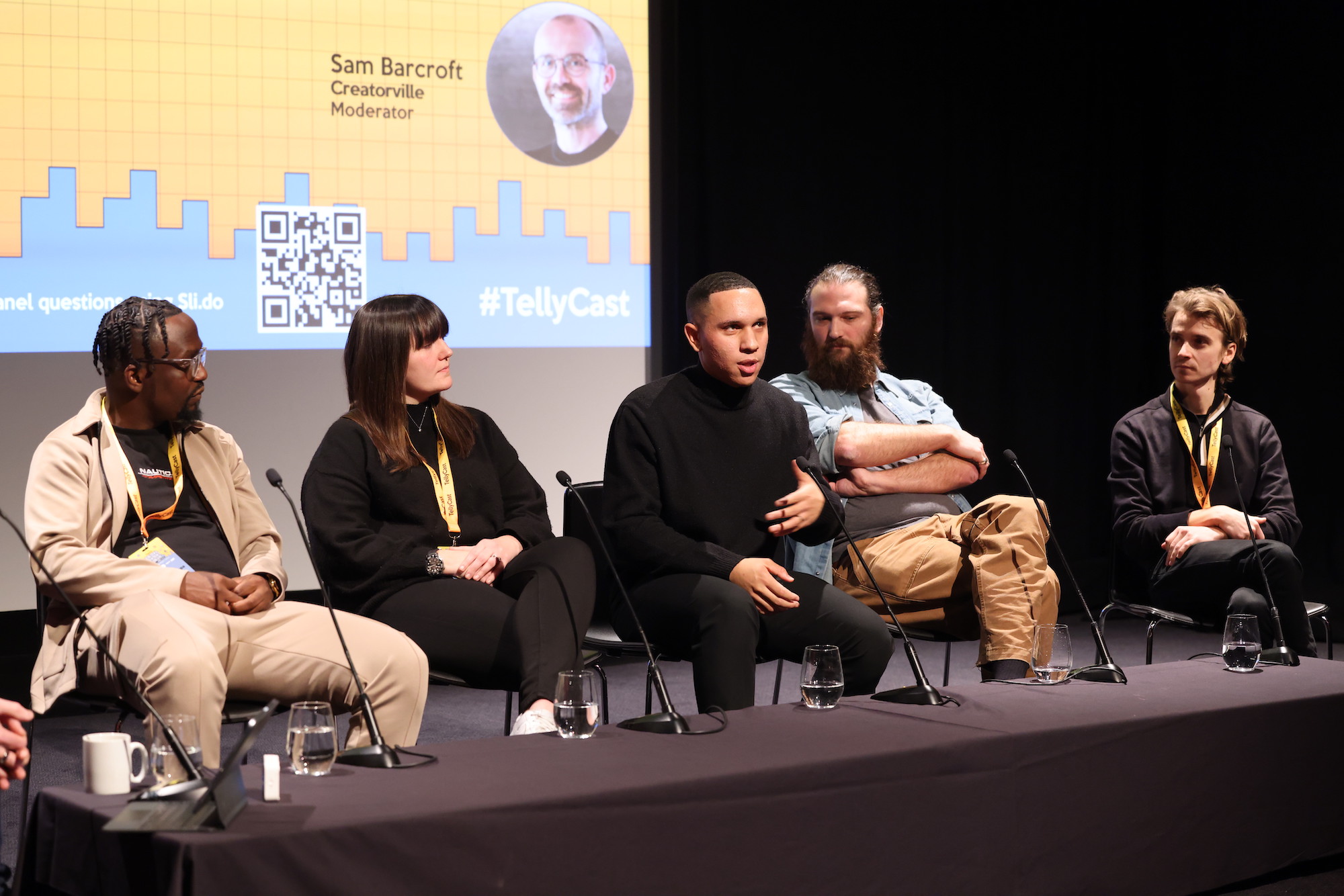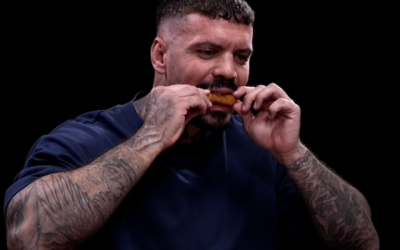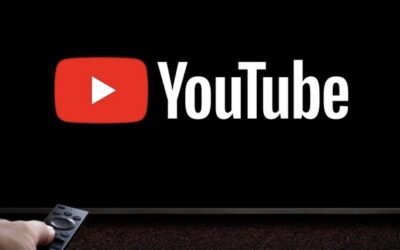Tellycast’s first-ever Digital Content Forum was held on November 30th at the BFI. Sponsored by BBC Studios, the event attracted a dynamic crowd of digital-first studios, broadcasters, branded content experts, social publishers, podcasters and video creators. During the course of the event, delegates had the opportunity to network with industry peers, participate in a content showcase and attend a series of panels with digital-first thought leaders. Below is an edited version of the ‘Social Publishers: The New TV Networks’ panel, which brought together Wall of Entertainment’s Taf Makopa, Jungle Creations’ Melissa Chapman, Arcade Media’s Jordan Schwarzenberger, LADbible’s Thom Gulseven and Final Straw Productions’ Joe Sugg. The panel was moderated by Creatorville’s Sam Barcroft, also a leading light in digital-first content.
Sam Barcroft: Good morning everyone and welcome to the Digital Content Forum. We’ve got a great panel of social publishers to kick off with, and I’m going to start by asking them about audience. Taf, Wall of Entertainment has been an incredibly success story. Tell us how you think about your audience.
Taf Makopa: For us, the core audience is 14-35 year olds. We focus on areas that they like and that we think they’d appreciate. If we think we need to educate them on a subject, we do it in the way they would want us to speak to them. We’ll never do a show that is not within our DNA. We see our job as to sell joy – so even if the audience cries along the way, there will be joy at the end. Every time we put out a piece of content we aim to drive emotion. A good example is dating format Does The Shoe Fit (124 million views across five series).
SB: How do you work with feedback?
TM: I love it. I used to be so obsessive, I would stop driving and pull over to read comments. It’s instant feedback. It helps you know what the audience is thinking before the next episode comes out. When you put the audience first, you have to listen to what they say. I might think something is funny, but if the audience says it’s not, then it’s not – and as creators we have to listen to that.
SB: Melissa, Jungle has grown into a huge business with all these amazing brands. So tell us about the company and how you think about audiences.
Melissa Chapman: Given that the panel is called ‘The New TV Networks’, you could think about Jungle Creations in simple terms as a broadcaster. Our brands are our channels and reach more than 140 million followers worldwide.
Twisted is our food and drink channel, Craft Factory is craft and DIY, vt. sits in the entertainment space and there are others. With an audience of 140m, it’s impossible to view the audience as a single entity – because they represent so many different communities. So we are structured around these passion points and their audiences. Our goal is to strengthen the relationships between brands and audiences with programming that has a consistent tone of voice. In the case of Twisted, for example, there is a common thread that runs through every piece of programming, whether we have made it in-house or it has come via the Jungle Creator Networks. That way the audience gets to know the brand DNA.
SB: So how are you transforming that audience into a business model?
MC: We’ve grown from a single Facebook page in 2016 to a significant media property that has a presence across platforms. But that’s only part of the story. Because we are dealing with passionate communities, we’ve been able to transcend into the real world – so we have delivery-only restaurants, cookbooks, a beer in the Co-op, a partnership with Asda. The beauty about communities is that they create such a wealth of business opportunities. People say it’s been a tough year for platforms commercially, but not in terms of viewership. People are still consuming social entertainment which is really exciting for us.
SB: What about feedback…audience interaction?
MC: Like Taf said, audience interaction is important. We have built social interaction in formats like Sandwich Goals. Unlike TV, audiences can feel like part of the creation process and participate in two way conversations.
SB: Jordan, you’re manager of The Sidemen, who are like Take That meets One Direction on YouTube. What does audience mean for them?
Jordan Schwarzenberger: For The Sidemen (18.1 million subscribers on YouTube), community is at the heart of everything they do. They are huge on every digital platform; so for Arcade, it’s about trying to add value to the success they have achieved over the years. They have so many ideas that they have never able to execute because their focus has been on the content and the brand. So now we are helping them make some of those ideas a reality.
SB: One development has been the creation of a subscription service.
JS: The two things we are obsessed about are value and access. We are obsessed with giving the community more than we are asking for, so that has to be true in the case of the premium offering Side+, which is £6.99. It has to be so valuable to the audience that no one questions the price. In terms of value, subscribers get exclusive content. As for access, there are giveaways, meet and greets where the Sidemen meet fans. It all has to go above and beyond expectations.
SB: Thom, same question regarding LADbible Group and audience
TG: We’re similar to Jungle in that we have a network of brands that appeal to a wide group of different audiences, tastes and demos. We’re reaching one billion people across every platform, so we are constantly thinking about how to cater for those audiences and tailor content to different destinations.
Like the others have said, listening to audience is incredibly important. It gives us the insights we need to make sure that what we make is what they want. I used to work in TV and the big difference here is that we know the audience will probably like what we make, because the journey starts with us asking them. All of this is backed up by data. Last year, we published 17000 videos and this year it will be more like 25000 including short form. That is a ton of insights about what people want to watch that feeds into our creativity.
SB: Is that level of insight the biggest difference between LBG and TV?
TG: It’s certainly one of them – but it does come with a challenge. The insights are very valuable but in the back of your mind you have to keep reminding yourself to be innovative and creative, to keep pushing different things.
Another difference I’d point to is that we are comfortable if our shows evolve during their run. Episode 10 will often be different to episode 1. We’ve seen it with our debating format Agree to Disagree which started life focusing on internet debates but over time has morphed into more of a celebrity and sports format. That’s an example of us following where the audience wants to go.
SB: Joe, you’ve enjoyed success in digital-first media and TV. Tell us about how you grew your business and the way you think about audience.
Joe Sugg: I managed to generate 7m followers in seven years. Looking back, the key was growing community. I was able build a strong connection with the audience through YouTube, which was a great platform to do that. The close relationship I have with the audience has been paramount throughout my career online and also helped me when I made my first move into traditional media. Myself and a room-mate made a straight to DVD production of a road trip with BBC Studios. It felt like a bit of a risk, because TV was an unknown space, and the production process was different. But I loved doing it and it worked commercially because we knew our audience very well.
I’ve now started a production company (Final Straw Productions) with backing from BBC Studios. I’m delighted they are taking a chance on digital-first talent, and I’m looking forward to coming up with original ideas and interesting formats – telling my stories and helping others tell their stories.
SB: Let’s take a closer look at the kind of work you do and how you make money. Taf, how has Wall of Entertainment grown the business commercially?
TM: A key part of our business is branded content; helping brands connect with audiences. An example is the work we do with Footasylum (FA). The FA conversation started in 2018, when they had 6000 subscribers on YouTube and we had a huge Facebook following. We knew they had access to talent but they needed some content that would make their brand cool. So we made Truth Asylum, a series based around a lie detector test. We published the first half of the show on our platform, but to finish watching the audience had to go Footasylum’s channel. That first video gave them 50,000 views overnight and now their channel is up to 2m. That example is really about how we used our expertise creating formats to help the brand tell a better story.
SB: Mel, tell us more about Jungle’s origin story and future plans.
MC: The company was founded in 2014 by Jamie Bolding. It has gone from a single Facebook page to more than 140 million followers. Last year, private equity firm Livingbridge acquired a majority stake to support our growth plans.
The relationship between our channels and brands continues to be important. A key part of our role is to garner insights about the audience’s end to end journey in social, so we can help brands shape their strategies. Every video we upload has a tagging taxonomy that we overlay with performance trends – so we really understand community data and the intelligence it provides.
With this in mind, we are growing our social agency The Wild. Social can be a scary place for brands to put their budgets, but they know that they need to have a presence in the medium and build communities. We can support that.
As discussed, diversification into new commercial areas is also important to us because we’re looking to create multiple revenue streams across the business.
SB: Jordan, tell us what you’ve been doing with The Sidemen?
JS: The great thing about the guys is that they make decisions quickly. So we got them to tell us areas they were interested in developing – and they came up with a list of around 10-12 priorities including launching a restaurant, creating an alcohol brand, trading cards, podcasts – and the membership model that I’ve already talked about. So to give a couple of examples, you can now find a Sidemen-branded vodka in Morrisons and there’s also a Topps trading card set.
We’ve got a lot of other projects coming and plan to launch hotels soon. The key for us is to capitalise on the interest that The Sidemen have generated among Gen Z and millennials. We want to put as many sticks in the ground as we can now, do as much brilliant stuff as possible, and see where we are in ten years.
SB: Thom, LBG has been a great story – the digital-first company that went public. How do you make money in a world where established players like Channel 4 are also starting to expand their creative and commercial ambition?
TG: Diversification of everything we do is crucial. We focus on making content that can work everywhere – so that it reaches the maximum amount of people. Areas we are looking at include the traditional sponsorship model you’ve seen on TV, and short form. One thing we are focused on is what a format looks like in short form. This area is such a creative meritocracy; so we’re figuring out how to make stuff that has a strong identity – so we can sell audience against that.
SB: Joe, what kind of things will the new production company be doing?
JS: I want to try a range of different things, and see what learnings I can bring from the digital space into traditional TV. I want to tell my own stories, but I also love helping other people tell their stories. So I can see myself taking more of a backseat, off camera, collaborating with other talent. I’d love to pursue some passion projects and come up with new formats. But I won’t necessarily be in those. It will always be about who can make it the best show that it can be.
SB: Looking ahead, Taf, tell us Wall of Entertainment’s strategic priorities.
TM: We see a lot of power in formats. The Sidemen have proved that, and so have we. In addition to this, Wall of Entertainment has expanded into other areas. We have a film slate and are making a dating show with Amazon Prime Video. The idea is to build multi-revenue streams with talent, brands & formats.
SB: How big a factor was timing in Jungle Creations’ success, Mel?
MC: Timing was critical for a lot of social publishers. I certainly think the barrier to entry is higher now for anyone who wants to be a publisher at our scale. That said, anyone with a phone, a personality and some talent can be a creator – so that is more democratised than ever. So I think the model really revolves around creators seeking to work with an established network like Jungle.
SB: Thom, what is the most exciting next step for you at LGB?
TG: I think we’re looking at formats over everything. How do we build the strength of our formats, so we are known by audiences beyond the publishing brand. There’s maybe some learnings we can take from the TV in this regard.
SB: Joe, what’s the biggest lesson you’ve learned so far?
JS: Being authentically you. That has always been the key. The audience can see if you are being disingenuous or if you don’t have real passion.
SB: Jordan, The Sidemen have such amazing reach. Are they at the point where the video and content is just marketing for all the other products?
JS: It’s more than that. The content is the core of everything. If the channel doesn’t pop the whole thing falls down. Everything depends on maintaining that connection with the audience. So quality content is the number one priority.





